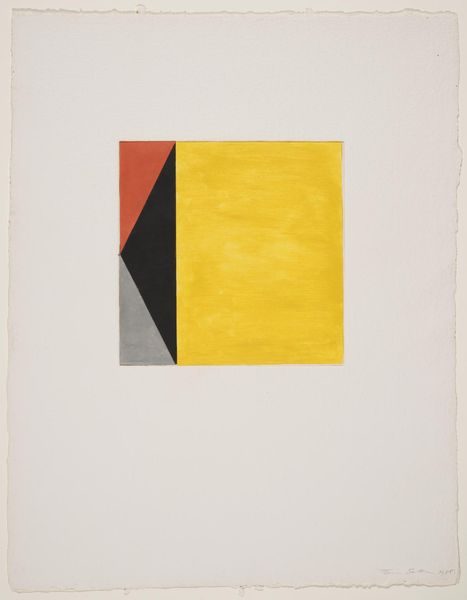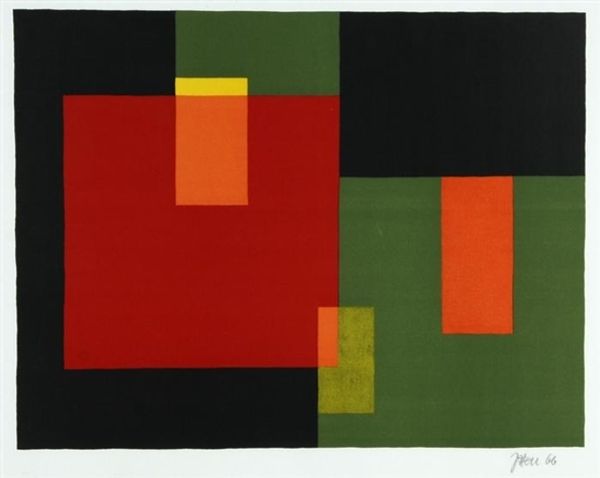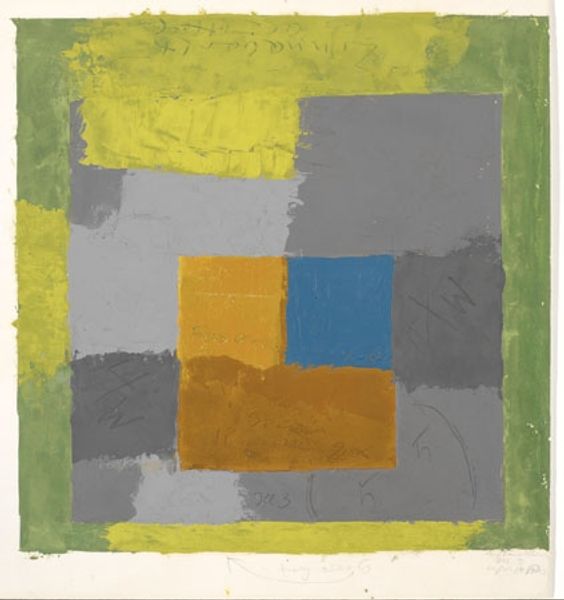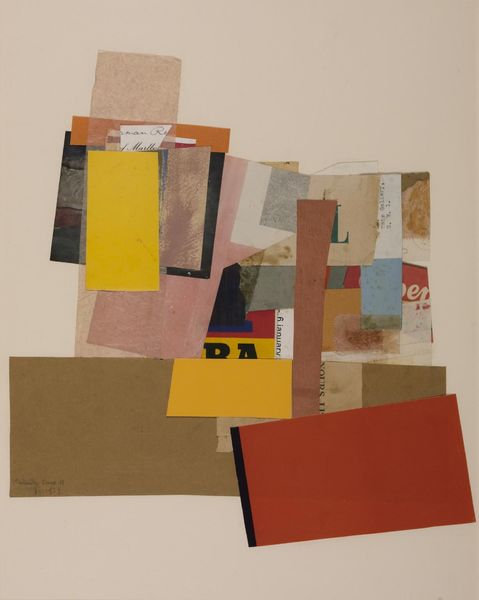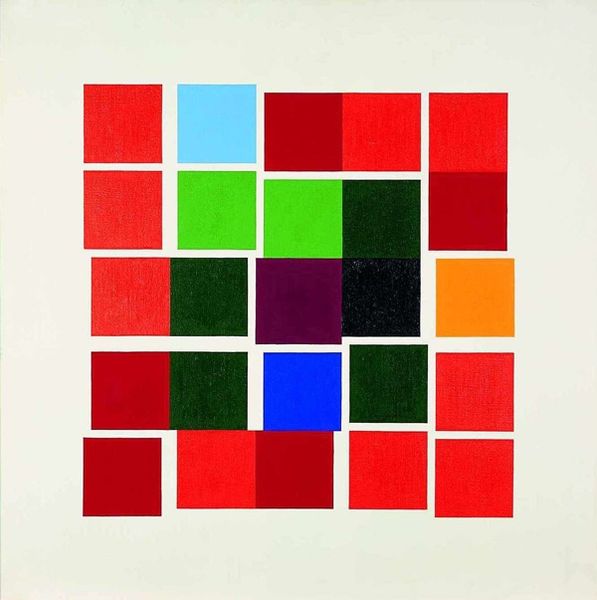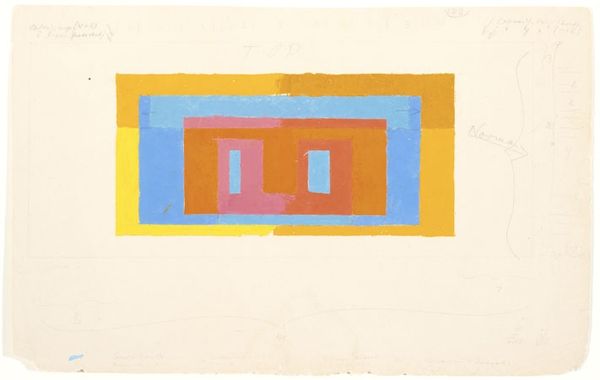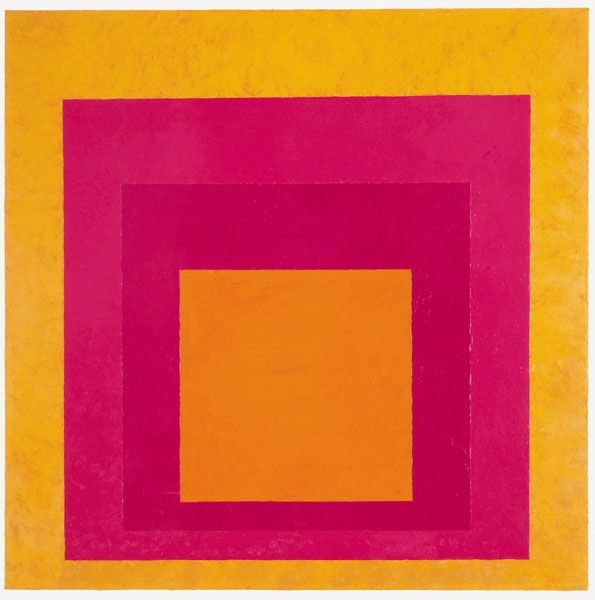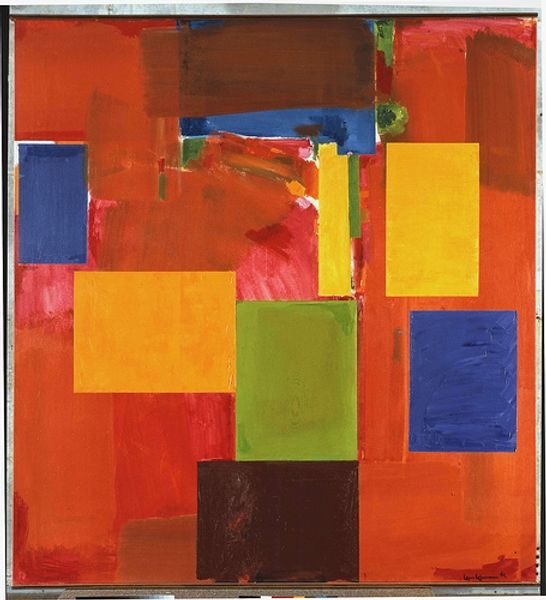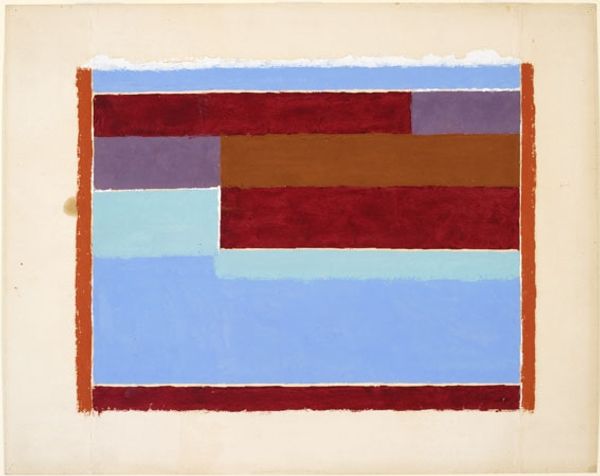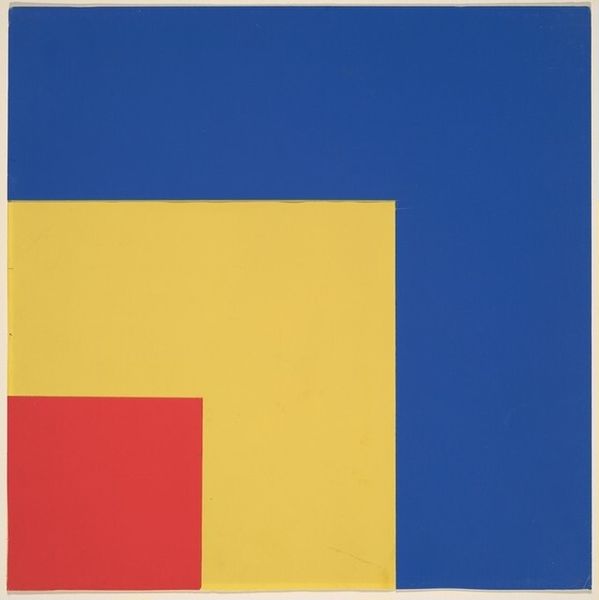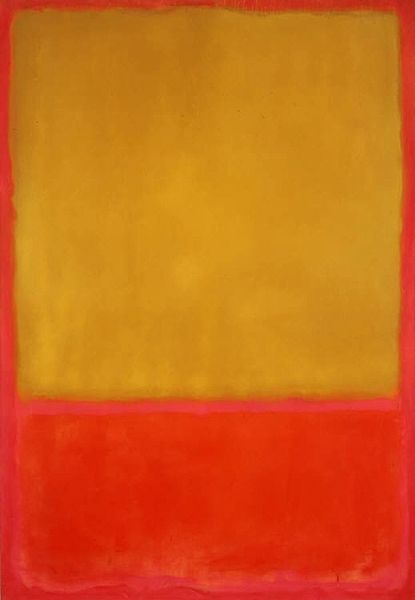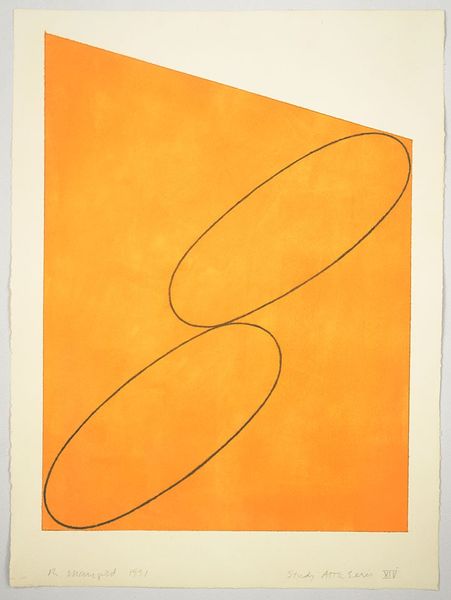
Copyright: Richard Mortensen,Fair Use
Curator: Richard Mortensen's 1971 print, "Kiel," presents us with a fascinating exercise in color and form. Editor: Wow, what a color punch! That hot pink square immediately grabbed me—it's like a neon sign in a geometry textbook. Very cool. Curator: Mortensen, often associated with late modernism and Pop Art tendencies, developed this geometric, abstract language later in his career. It’s interesting to observe the print, since it exemplifies the era’s interest in industrial processes of art making. Editor: Industrial, huh? I get that with the hard edges and the flat color blocks. There’s almost a sense of…playfulness though. The off-kilter arrangement, that little scribbled line thing…it feels deliberately whimsical. Like, the robot’s trying to cut loose. Curator: I find the dynamism compelling, reflecting on how color relationships play such a crucial role in the work’s reception, with color serving to construct depth within an otherwise flattened picture plane. Mortensen exhibited actively and was thinking about reaching a wider audience through accessible works like this print. Editor: I guess. And knowing its from the early 70's it's even more compelling. It is speaking to me now and has more appeal as "history" is involved. If this popped up in an Urban Outfitters store it wouldn't hold much appeal. Curator: It’s important to recognize the evolving perception of such art in contemporary culture. When it comes to Richard Mortensen, it's also worth thinking about what these geometric configurations represented to the artist and how they engaged with debates around abstraction and its broader cultural significance in that decade. Editor: You know, I came in thinking, "Bold colors, interesting shapes, I dig it," but now, looking at the image again through the lenses of Pop Art history, it makes it just a bit richer to the soul, if you will. Curator: Indeed. And through historical reflection we reveal what's so exciting to analyze the artwork as we expand what the piece is about—beyond a set of colors and shapes.
Comments
No comments
Be the first to comment and join the conversation on the ultimate creative platform.
